
| Brown House Moth (one synonym: Gelechia improbella Walker, 1869) CHEZALA GOUP OECOPHORINAE, OECOPHORIDAE, GELECHIOIDEA | (donherbisonevans@yahoo.com) and Stella Crossley |
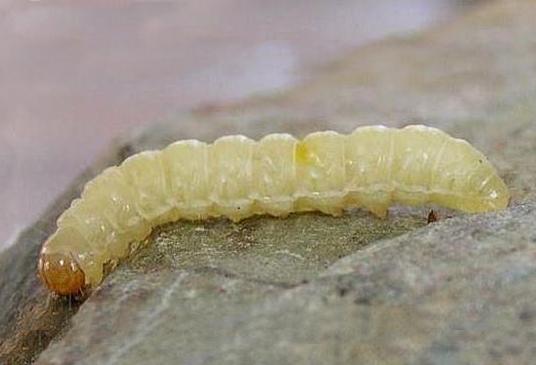
(Photo: courtesy of
Ben Smart,
Manchester, UK)

| Brown House Moth (one synonym: Gelechia improbella Walker, 1869) CHEZALA GOUP OECOPHORINAE, OECOPHORIDAE, GELECHIOIDEA | (donherbisonevans@yahoo.com) and Stella Crossley |

(Photo: courtesy of
Ben Smart,
Manchester, UK)
These Caterpillars are synanthropic house pests. They are a yellowish or pinkish off-white, with a brown head. The caterpillars feed on virtually any vegetable or animal material, including fur, leather, grain products, textiles, dried fruit, dead insects, and books and book bindings. They prosper in damp humid conditions, and are able to enter a dormant state if their environment becomes too dry.
The caterpillars are often found in carpets in damp spots, along the edges of exterior sliding doors or under furniture. They grow to a length of about 2 cms.
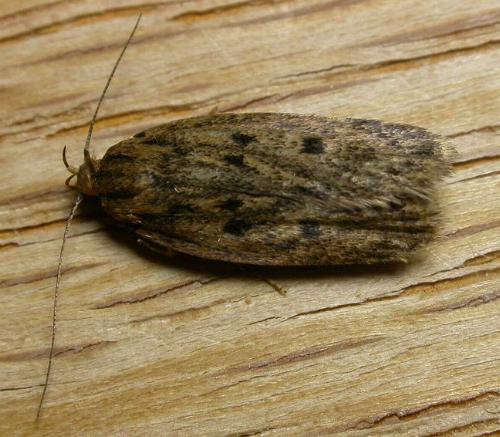
The adult moths are brown with dark speckles, and several prominent black spots on each forewing. The hindwings are off-white shading to brown at the wingtips. The moths also have long floppy antennae. The moths have a wingspan of about 2 cms. The pheromones of this species have been identified.
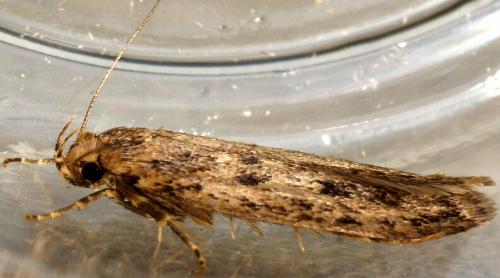
The species originally came from India. It now occurs throughout the world, eg:
and was introduced into Australia by unfortunate accident, where it now occurs over much of the continent, including
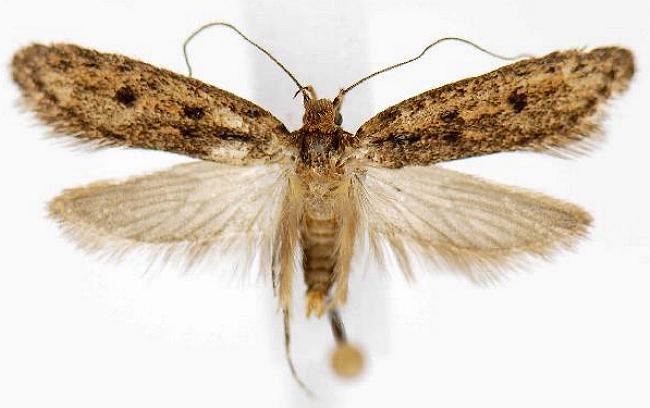
Various strategies have been suggested to control the species, including :
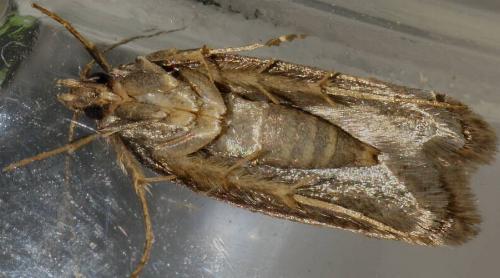
Further reading :
Ian F.B. Common,
Oecophorine Genera of Australia I:
The Wingia Group (Lepidoptera: Oecophoridae),
Monographs on Australian Lepidoptera Volume 3,
CSIRO Publishing, Melbourne 1994, pp. 19, 33, 34, 37.
Ian F.B. Common,
Oecophorine Genera of Australia II:
The Chezala, Philobota and Eulechria groups (Lepidoptera: Oecophoridae),
Monographs on Australian Lepidoptera Volume 5,
CSIRO Publishing, 1997, pp. 21m 237, 245, 237-248, 394.
P.J. Gerard,
The digestive system of the keratin-feeding larvae of
Hofmannophila pseudospretella (Lepidoptera: Oecophoridae),
New Zealand Journal of Zoology,
Vol. 29 (2002), pp. 15-22.
Henry Tibbats Stainton,
G.E. Woodroffe,
(updated 2 June 2013, 5 October 2025)
An attempt at a systematic catalogue of the British Tineidae & Pterophoridae,
London (1849), p. 14.
A Life-history Study of the Brown House Moth,
Hofmannophila pseudospretella (Staint.) (Lep., Oecophoridae),
Bulletin of Entomological Research,
Volume 41 (1951), Issue 3, pp. 529-553.

caterpillar

butterflies

Lepidoptera

moths

caterpillar